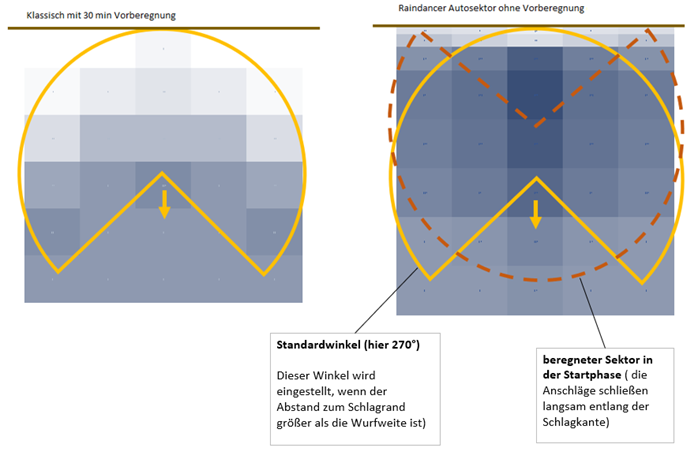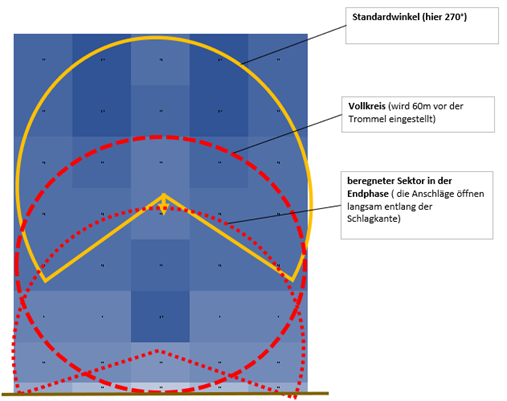Water Distribution with Sector Control at the Start and Finish
If you work with the raindancer and sector control, you can irrigate right to the border at the start and finish.
In this film you can see how it works in action ...
To see what the water distribution looks like in reality, we took measurements of the water distribution. We placed approx. 100 measuring cups in the area in order to obtain truly useful and interpretable measurement results.
This is what the results look like:
At the start, we compare the classic irrigation with 30 min pre-irrigation with the start using sector control. Here, the gun is positioned at the border of the field and the movement starts immediately.
The stops gradually close as it moves forwards. Once the full circle has been reached, the standard setting (270° in this case) is used to continue the run.
The measurement results show a significantly better distribution up to the boundaries of the field compared to the conventional method.
With conventional irrigation, approx. ¼ ha is not or barely irrigated (on average, only 25% of the planned precipitation is applied).
Let's assume, one application per day and an irrigation cycle of 8 days. This corresponds to a gain in irrigated area of approx. 2 ha per hose reel! Just at the start of the run.
We have also taken initial measurements for the water distribution at the end of the irrigation run - here are the results.
Basically, you have the option in the raindancer to set the irrigator with sector control to automatically switch to full-circle irrigation (e.g.) 60 m before the hose reel. This means that irrigation is also provided in front of; around and behind the hose reel. The full circle opens when the throw distance comes close to the edge of the field.
Effective water distribution is achieved here.
When the hose reel is positioned in the field before the headland, it continues to irrigate in a full circle up to the field's border. However, depending on the throw distance, there may be smaller, unirrigated areas left in the corners to the left and right.
At both the beginning and end of the irrigation run, you might notice smaller patches at the field's edge that receive insufficient water. In these instances, you can extend these areas beyond the field's boundary to ensure optimal irrigation right up to the field's edge.
How is this accomplished? By either reducing the throw distance or by marking an area outside the field and setting the status to "Allow irrigation."
Naturally, it is important to consider if there is a field path or a highway along the field's border.
Preliminary measurements for water distribution in self-propelled machines, such as in corners, have been conducted, but we are currently still evaluating. We will provide updates once we have conclusive results.




No Comments